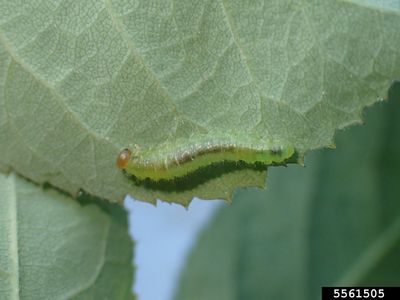Rose Slug Identification
The rose slugs look like caterpillars, but they are not. They are about 1/2- to 3/4-inch (12.5 to 18.8 mm) in length when fully grown. The European rose slug is smooth and greenish yellow in color with a brown head and also tends to be slimy like typical slugs. The other is the Bristly rose slug, which is covered with small hair-like bristles. Both are the larvae of plant feeding wasps known as sawflies. The Bristly rose slug will typically feed on the underside of the rose leaves, leaving the translucent lacy layer of the leaf tissue that some rosarians refer to as skeletonizing of the foliage. Thus, it turns brown, and later large holes may develop with all that is left being the main vein of the leaf or leaves affected. The European rose slug will do virtually the same thing to the leaves affected except that they like to attack the surface tissues of the leaves rather than the underside. Thus, the Bristly rose slug can be more challenging to control.
Rose Slug Control
Contact insecticides are very effective against both family members of the rose slug family. However, it is important to note which one you may be dealing with, as to be sure to get the Bristly rose slug under control one must be sure to get the insecticide spray up under the foliage. If only a few rose slugs are seen, they may be picked off by hand and disposed of. However, if several are seen and the damage to the foliage is significant, the use of an insecticide is important to gain control before the health of the bush or bushes effected is placed at risk.
